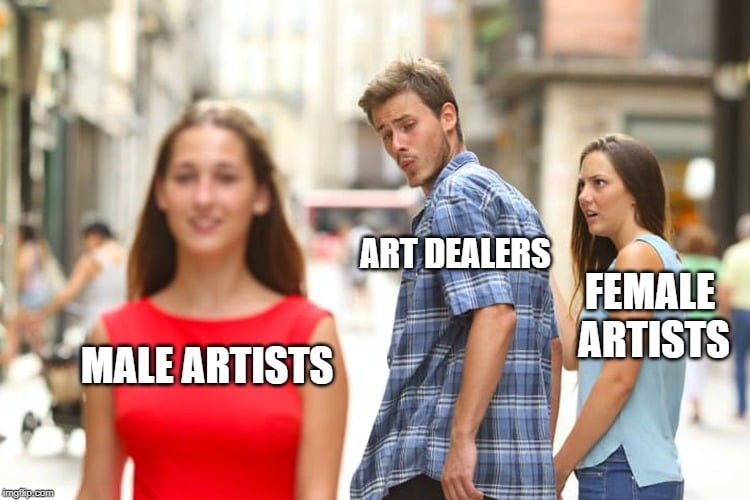Art World
Nearly 70 Percent of Artists Represented by London’s Top Galleries Are Men, According to a New Study
The report found only some evidence of progress for women in the British art world.

The report found only some evidence of progress for women in the British art world.

Javier Pes

The glass ceiling remains in place for female artists in Britain—and despite certain signs of progress, changes in the art world have only been incremental, according to a new study.
The report, commissioned by the Freelands Foundation, finds that the British art world is a microcosm of the larger economy, where women’s labor is valued less than men’s.
According to the report, 68 percent of artists represented in major London commercial galleries are men, even though women make up the majority of creative arts graduates. The situation is even worse in the secondary market, where 88 percent of sales were of works by male artists.
Galleries run by female directors are complicit in perpetuating this historic inequality, according to the report. Although 48 percent of London gallery directors are women, only 32 percent of the artists in these stables are women.
“There are some extraordinarily powerful women in the art world, but they are not necessarily working hard to reach [gender] parity in the artists they represent,” the report’s author, Kate McMillan, tells artnet News.
McMillan, an academic at King’s College, also discovered that over the past three years, there has been a 1 percent decrease in female artists being represented by London galleries. “People tend to overestimate how well they are doing,” she says.
McMillan says it is especially rare to find a gallerist who thinks about how best to support their female artists who have young children. She found only one who had done significant of planning with her artists, and who helped fund the cost of child care (the gallerist was herself a single mother). The prevailing attitude is still that female artists in their 30s “have kids and run off to the countryside and don’t make any art anymore,” McMillan says.
Nor is the situation much better at teaching institutions, where 63 percent of senior staff are male. This is despite the fact that “66 percent of applications to postgraduate study in the creative arts and design sector were by women,” according to the report.
“Most academics working in art schools are artists,” McMillan points out. “There is a correlation between the percentage of male artists represented commercially and the percentage of senior academics,” she says.
While commercial galleries and schools have a long way to go, museums and non-commercial spaces have made significant changes in their programs over the past three years. McMillan found that in 2018, 55 percent of solo shows organized by 40 institutions in Britain featured work by female artists. In 2017, that figure was 39 per cent.
There have been more high-profile solo shows featuring work by female artist than ever before, such as last year’s unprecedented collaboration between the National Portrait Gallery, National Gallery, and the Royal Academy in staging three Tacita Dean exhibitions. But McMillan warns against assuming the trend will continue. “One of the assumptions people make is that progress is inevitable,” she says.
Still, gallerist Alison Jacques, who works primarily with female artists and estates, says there has been “a massive shift” in the representation of female artists. She is encouraged by the fact that works by artists such as Dorothea Tanning, whose estate she represents, are now selling for $1 million and more. But Jacques acknowledges that closing the gender gap will take time.
The 2019 report is the first McMillan has undertaken for the Freelands Foundation, which was launched by the philanthropist Elisabeth Murdoch. The organization also supports mid-career female artists through an annual £100,000 award, which goes towards a solo show in an institution outside London. The award winners since 2016 are: Jacqueline Donachie (The Fruitmarket Gallery, Edinburgh); Lis Rhodes (Nottingham Contemporary), and Veronica Ryan (Spike Island, Bristol).